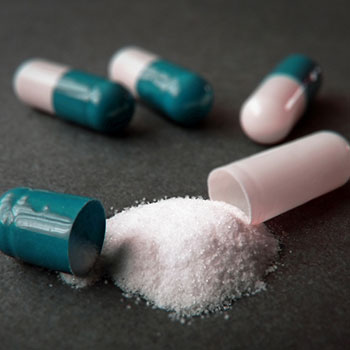Some dietary supplements are advertised as “legal steroids,” and some include ingredients with names or terms that look like they might be anabolic steroids. But if anabolic steroids are illegal to use, how can you tell if a supplement you might be considering doesn’t contain any of these illegal ingredients?
The chemical formulas for steroids and steroid-like substances are complex and often very difficult to distinguish without in-depth laboratory analysis. Anabolic steroids—compounds “designed” to behave like testosterone—and supplemental testosterone products are classified as “controlled substances” and are regulated by the Drug Enforcement Administration. If a specific steroid is on the U.S. Drug Enforcement Administration (DEA) list of controlled substances, then it is easy to identify, but even if a substance isn’t listed, it still might violate federal and state laws.
Also, because steroid-like substances can produce positive drug test results for anabolic steroids, we advise using extreme caution when considering any “dietary supplement” product labeled as containing steroid-like ingredients—including prohormones, testosterone “boosters,” “designer steroids,” and anything else compared to or purported to behave as any known anabolic steroid. In addition, little is known about the safety of these ingredients. In fact, the Food and Drug Administration (FDA) has warned consumers not to use bodybuilding products that are represented to contain steroids or steroid-like substances. See more information in the article “Caution: Bodybuilding Products Can Be Risky.”
If the label of a dietary supplement product has a warning about drug testing, consider it a red flag that the product might cause a positive drug test. If you’re concerned about a product you’re using (or considering), you can call the appropriate number found in the OPSS article “Drug testing and dietary supplements” to determine whether it will cause you to “pop positive.”
Updated 09 May 2019

